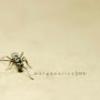Dear All,
I just want to know your experiences in pest management procedures or standards regarding pesticide requirement and application.
Is pesticide (Green Labeled, non residual) application (during shut down operation) inside production area really prohibited?
I have encountered food manufacturing plants that do not allow chemical treatment inside production area, but when I assessed it, it is highly infested by pests and I think sanitation won't be enough to eliminate the pests.
If you were the Plant Manager, would you agree on a recommendation chemical treatment on cracks, crevices (spot spraying, misting) inside the production area? (of course, this will be conducted with proper SOP)
Hope to hear from you.
Thank you.



















